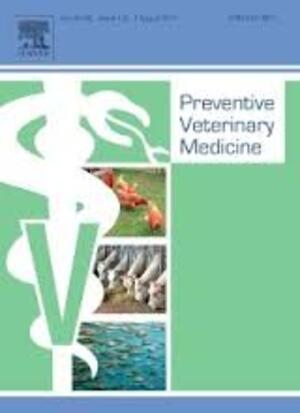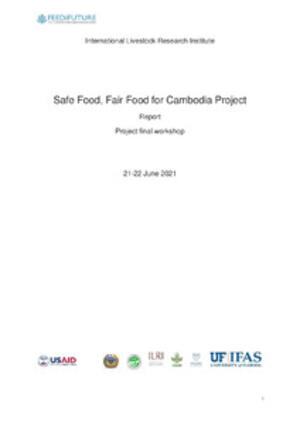
Seroepidemiological survey of Rift Valley fever virus in ruminants in Garissa, Kenya
Abstract
Introduction: Rift Valley fever (RVF) is a vector-borne zoonotic disease caused by phlebovirus in the family Bunyaviridae. In Kenya, major outbreaks occurred in 1997–1998 and 2006–2007 leading to human deaths, huge economic losses because of livestock morbidity, mortality, and restrictions on livestock trade. Aim: This study was conducted to determine RVF seroprevalence in cattle, sheep, and goats during an interepidemic period in Garissa County in Kenya. Methods: In July 2013, we performed a cross-sectional survey and sampled 370 ruminants from eight RVF-prone areas of Garissa County. Rift Valley fever virus (RVFV) antibodies were detected using a multispecies competitive enzyme-linked immunosorbent assay. Mixed effect logistic regression models were used to determine the association between RVF seropositivity and species, sex, age, and location of the animals. Results: A total of 271 goats, 87 sheep, and 12 cattle were sampled and the overall immunoglobulin G seroprevalence was 27.6% (95% CI [23–32.1]). Sheep, cattle, and goats had seroprevalences of 32.2% (95% CI [20.6–31]), 33.3% (95% CI [6.7–60]), and 25.8% (95% CI [22.4–42]), respectively. Seropositivity in males was 31.8% (95% CI [22.2–31.8]), whereas that of females was 27% (95% CI [18.1–45.6]). Conclusions: The high seroprevalence suggests RVFV circulation in domestic ruminants in Garissa and may be indicative of a subclinal infection. These findings provide evidence of RVF disease status that will assist decision-makers to flag areas of high risk of RVF outbreaks and prioritize the implementation of timely and cost-effective vaccination programs.
Citation
Nanyingi, M.O., Muchemi G.M., Thumbi, S.M., Ade, F., Onyango, C.O., Kiama, S.G. and Bett, B. 2017. Seroepidemiological survey of Rift Valley fever virus in ruminants in Garissa, Kenya. Vector-Borne and Zoonotic Diseases 17(2): 141–146.










